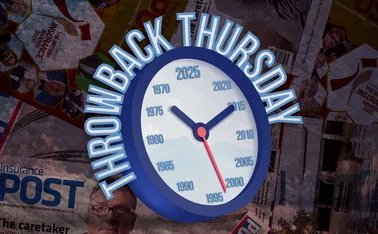
Corporate Underinsurance: Solving the problems

Underinsurance is a common problem and a collaborative approach is needed to stamp out an issue that has gone unresolved for too long
Commercial property insurance spans a broad church of industries and risks, but there is a common problem with underinsurance, which needs special attention if clients are to get the cover they need.
Over the course of many years, there has been an ongoing mismatch in commercial property insurance between the sums insured and the underlying risk.
Only by bringing specialist resources and technical expertise to the fore, can the insurance industry hope to move forward on this issue and, in doing so, protect policyholders properly in the event of a loss.
There are three main areas in which inaccurate sums insured come up time and again: business interruption; machinery and plant; and property valuations. Business interruption is a minefield and to be surefooted in this area requires technical expertise and informed insight.
While brokers bear ultimate responsibility for representing their client’s risk to insurers, many would benefit from outside help when dealing with some of their more complex clients — and moving towards this sort of collaborative approach must be a priority for the industry.
One of the major problems that continually crops up is around the definitions of gross profit and the inconsistencies that so often arise between that used for insurance purposes and that used in the company accounts. This is a simple point and making sure the sum insured is based on the correct definition of gross profit should be one of the first steps in assessing and representing a risk.
However, this often simply does not happen and, as a result, there can be a woeful mismatch between the level of cover put in place and the level of cover actually needed. Similarly, there needs to be renewed attention put on the indemnity period that most business interruption insurance carries, as the default 12 months that around 75% of clients opt for, is often not enough.
Many wrongly assume that doubling the indemnity period will simply double the premium, but this is not the case. Instead, the calculation is much more sophisticated and most clients will be pleasantly surprised by the increases in question.
In recent years, declaration-linked business interruption policies, many of which do not include clauses on underinsurance, have been seen as a way around the issue.
However, this is not an effective sticking plaster and, where declarations are inadequate, insurers are often within their rights to view the risk as being misrepresented and possibly avoid the loss.
Overcoming the issues
Where underinsurance is discovered mid-term but prior to a loss, it can also result in the insurer being overlined and unable to underwrite 100% of the cover. This can lead to an expensive rebroking exercise generating unwanted cost and uncertainty.
To help brokers overcome these issues, insurers need to provide quick and convenient access to their own internal expertise as well as working with partners that can provide highly specialised services where necessary.
Professionalism and technical expertise are again at the heart of resolving the issues around the inaccurate valuations often given for machinery and plant. When it comes to finding replacement equipment, transporting it to the policyholder’s premises and reinstating it effectively, the number of variables involved is immense.
Without in depth knowledge, experience and painstaking attention to detail, it is incredibly easy to inaccurately assess the necessary sums insured.
Specialised knowledge is also required around the lead in times from suppliers for business critical equipment, which can, in turn, affect the business interruption aspect of cover.
Rushton International, an acknowledged expert in this area, puts it well when it says: “In order to derive accurate valuations, our professional valuers must embrace a broad range of disciplinary skills. These typically include detailed engineering and production plant knowledge, an understanding of overseas prices, as well as inflation and currency trends, and an awareness of a host of other influences — such as technology — affecting specific markets.”
Transportation and reinstatement costs also change on a regular basis and basic factors such as the price of fuel show how significant overall moves can be. Similarly, fluctuation in the currency markets can have a major impact on the cost of purchasing and moving goods internationally. In addition, then there are complex considerations around whether policyholders have bought new or second hand equipment, and whether it is insured on a reinstatement or indemnity basis.
Without operating at this level of detail, understanding the intricacies of the cover and using the most up-to-date information to calculate the sums insured around machinery and plant, getting to a reliable figure is very difficult.
There is often a fear that assessments of this detailed nature always uncover underinsurance and lead to clients paying a higher premium. There is no hiding from the fact that this is often the case, but this has to be countered by the benefits of knowing adequate insurance is in place.
It is also true that in many instances historical valuations are way over the mark and proper assessments can lead to significant reductions in the level of cover required. By not investigating the issue properly, brokers are failing to service their clients properly and are potentially leaving themselves open to legal action.
In recent years, nowhere has seen more fluctuation in underlying values than the property market and this is an area that needs to be keenly investigated for clients.
While valuations have gone through the floor in many instances, many make the mistake of directly correlating property value and rebuild costs. In reality there is no such link between the two figures and they are both driven by very different factors.
Operating in a truly global environment, rebuild costs are often affected by issues far removed from these shores. For example, the ferocious Chinese appetite for raw materials has driven the price of many global commodities such as steel.
Significant problems
Little may be seen of the massive building programme taking place in South East Asia, but nonetheless its effects are pushing up the domestic rebuilding costs of projects in the UK.
This comes at a time when the deflated economy and sagging property market has seen actual property valuations fall, emphasising the disconnect between the two.
Where property valuations and rebuild costs are out of date or substituted in place of one another, clients can be left facing significant problems. In the face of underinsurance and inaccurate valuations, it is up to insurers to make internal expertise available to brokers and their clients, and to proactively help them.
In addition, creating a network of partners that can provide specialist legal, environmental, loss adjusting and environmental services will make sure there is no reason for any aspect of a risk to be poorly represented. Insurers could also do more to spell out their risk appetite and by clearly defining the areas in which they want to focus, give brokers confidence that they can really add value in these sectors.
Do brokers have clients in the manufacturing, wholesale or food and beverage sectors? What about areas such as technology and communications, professional and business services and sports leisure and entertainment? Each of these commercial sectors has unique issues around the valuations declared for the purpose of insurance and where they are inaccurate policyholders, brokers and insurers all suffer.
This is not a new problem, but it is one that has been left unresolved for too long. It is now time to deliver the sort of change that will drive the improvement both the insurance industry and its clients need.
Peter Clark is head of property at Zurich Insurance.
For a broader view of business risks that could affect your customers, download your copy of Business at Risk.
Only users who have a paid subscription or are part of a corporate subscription are able to print or copy content.
To access these options, along with all other subscription benefits, please contact info@postonline.co.uk or view our subscription options here: https://subscriptions.postonline.co.uk/subscribe
You are currently unable to print this content. Please contact info@postonline.co.uk to find out more.
You are currently unable to copy this content. Please contact info@postonline.co.uk to find out more.
Copyright Infopro Digital Limited. All rights reserved.
As outlined in our terms and conditions, https://www.infopro-digital.com/terms-and-conditions/subscriptions/ (point 2.4), printing is limited to a single copy.
If you would like to purchase additional rights please email info@postonline.co.uk
Copyright Infopro Digital Limited. All rights reserved.
You may share this content using our article tools. As outlined in our terms and conditions, https://www.infopro-digital.com/terms-and-conditions/subscriptions/ (clause 2.4), an Authorised User may only make one copy of the materials for their own personal use. You must also comply with the restrictions in clause 2.5.
If you would like to purchase additional rights please email info@postonline.co.uk







